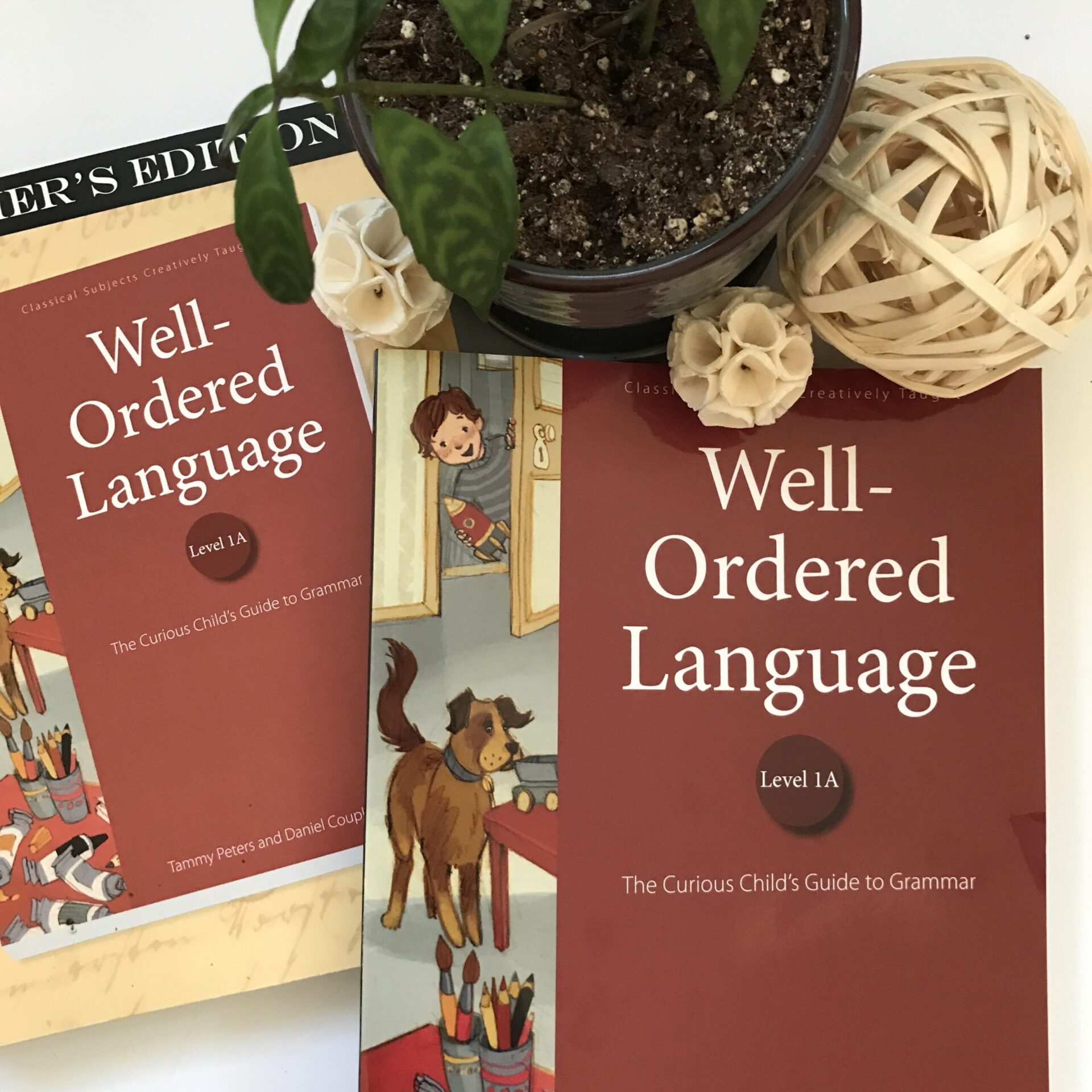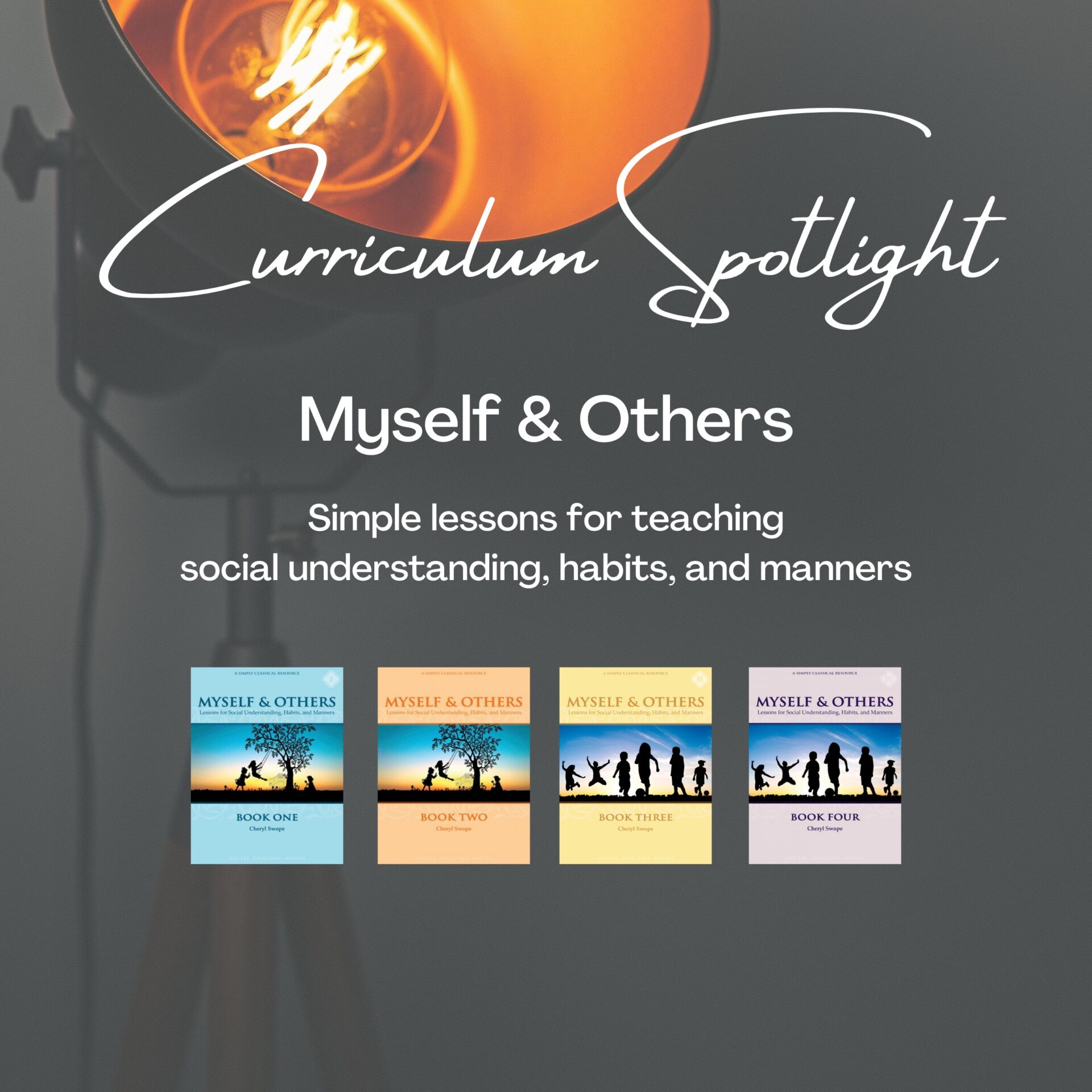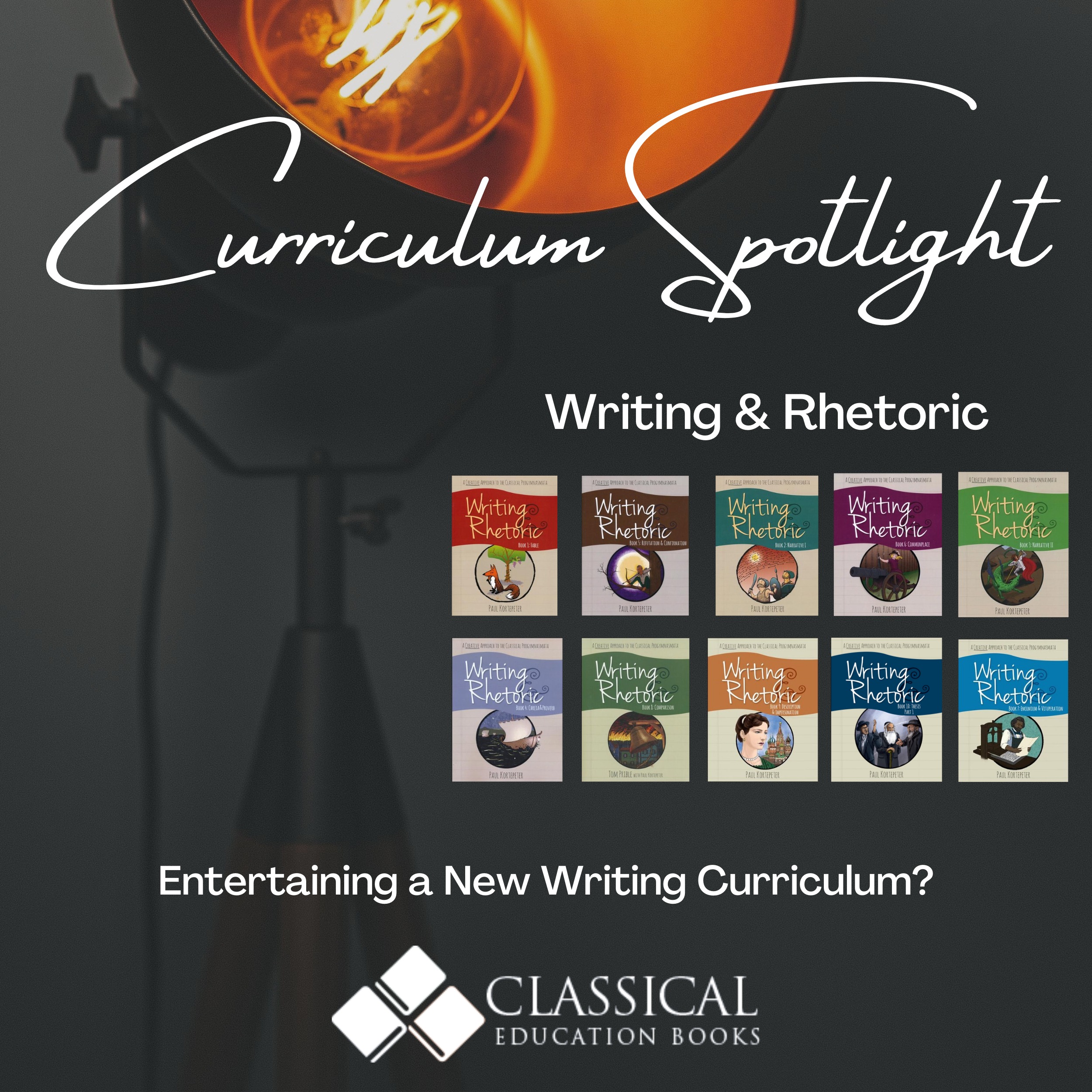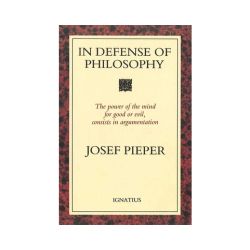
Workbooks in Homeschooling: A Misunderstood Resource? Our CEB team has met a fair amount of homeschoolers who recoil a little at the thought of using workbooks in their homeschool. We get it—who wants to replicate the schools with their repetitive worksheets when we have this once-in-a-lifetime opportunity to give our children a rich, engaging, and living education? But what if workbooks are exactly what you need? What if we told you that workbooks could be the exact tool you’re looking for to help you provide an engaging education for your children? Introducing Master Books They are a workbook-based curriculum that should not be overlooked as you plan your homeschool year. What makes Master Books special? Their workbooks are: graded colourful Christian open and go cover a variety of subjects But are they rigorous? They are not highly academic, but they cover the basics. Some might even say they are, well, mediocre—meaning, “of moderate academic quality.” But doesn’t life sometimes call for mediocrity? We’ve all experienced seasons where mediocre meals, housework, or family time is the only option. Don’t be ashamed! We’ve all been there—or will be there. Is this a test of endurance… or contentment? Ask yourself this question when you find yourself in “that season”: Is the Lord testing you on how fast you can recover and get back to healthy eating, tip-top housework, and the most memorable family time? Consider that maybe it’s your contentment that’s being challenged. How are you responding? What’s your attitude when life doesn’t allow for “the best”? Who Are These Resources For? This resource is going to appeal to families who: need something simple as they transition from a school setting to a homeschool setting, especially families who are not ready to abandon a typical way of doing school are expecting a new baby, experiencing illness, traveling, or tackling a big move and need a resource that can be used fairly independently have a child who needs to just “get through” some language arts (or other subject) so they can indulge in delight-driven learning are accountable to authorities and need some quick box checking want to be assured they are covering the basics but want room in their week to: have extensive and enriching family-centred morning times, read through booklists, go on field trips, dive down educational bunny trails, and pursue passion projects Read number 5 again! Did you notice it? Yes, workbooks can actually give you peace of mind and freedom to pursue all the other amazing educational opportunities that are afforded to homeschool families. Do What Works for You You need something that will work for YOUR family, in YOUR situation. Maybe this year it’s Master Books. By Adrianne Curwen Adrianne is a wife to a public-school educator/administrator and a homeschooling Mama to seven children, ranging in age from 8 to 24. In 2021, the family added a son-in-law to the bunch. She believes that we have a unique opportunity as homeschoolers to design individualized education that suits giftings, interests, and passions. She and her husband have used a blend of registered homeschooling, enrolment with independent DL schools, and participation in public trade school programs to design individualized programs for their children. She is passionate about using as many read-alouds, picture books, novels, and conversations to educate her children but also gets excited by the amazing homeschool-designed curriculum that’s out there. Adrianne is thrilled by her new role as Creative Director and is grateful to have an opportunity to learn something new. She is grateful, every day, for her saviour, Jesus Christ, and has no greater joy than when she sees her most important mission field walk with Him.

Homeschool Science: The Story of Science: Aristotle Leads the Way Aristotle Leads the Way was the main science text I found to pair with Beautiful Feet Books Ancient History (Intermediate) curriculum for my past year of homeschooling. My kids were in grades 6 and 8 this past year, and we often do Socials and Science together for ease. Aristotle Leads the Way was a perfect fit for middle school. I wanted an open-and-go resource that we would be able to keep up with our interwoven subjects. I was so pleased with this choice! It created a rich and fertile ground for seeping ourselves into history I’d forgotten from my youth but was eager to press into.* Teach Science through History Finding Aristotle Leads the Way was like finding a needle in a haystack. I was able to marry two sciences that my children enjoy learning about–Physics and Astronomy–with the historical era of Ancient Egypt, Greece, and Rome. If your child has never been introduced to either of these subjects, it doesn’t matter. This is an excellent place to start because Hakim gives us the chronological order of the ideas and observations that birthed these two subjects. If your students have had experience they’ll find new information and rediscover the why and how behind these disciplines from great thinkers of ancient times. As far as textbooks go, this is a smaller one, but at just under 300 pages, it’s flush with ancient maps, geographical photographs to provide context, works of art throughout antiquity, diagrams of inventions, and little excerpts that give the student practice with the concepts, whether that’s prime numbers or how Hero calculated the area of a triangle. Don’t know who Hero was? You’ll want to look him up; he was one of my students’ favorite thinkers and tinkerers from this text. If Hero’s ideas would have caught on quicker we’d likely be in flying cars by now! He invented hydraulics and a steam-powered device while living in Alexandria. The steam-engine powered train was up and running only 18 centuries later. Hero was a tad ahead of his time. I learned a lot this past year alongside my kids, and Hakim was a fantastic tour guide. She has a witty sense of humor, and the book is written to be read as a story. She spins the known world and highlights the masters of antiquity in philosophy, astronomy, physics, engineering, and mathematics, and how all of these disciplines were entwined together in the beginnings of scientific thought, experimentation, and record. We had such a good experience with Aristotle Leads the Way that we’ll be finishing the series over the next two years, adding Newton at the Center and Einstein Adds a Dimension, to our curriculum choices for science. I don’t recall ever hearing a peer saying to another, “Wow, that was really good!” about a textbook but that happened in my classroom! *So many puns, so little time. My name is Sarah Mast and I homeschool my two kids in Ft. Langley, BC. One of my favorite aspects of homeschooling is the community gained, and I volunteer with a local support group to help foster that and connect others. My family loves the outdoors and traveling, and our weekends include skiing, swimming, hiking, or biking depending on the season. I found Classical Education Books at a conference and noticed their well-curated selection of children’s books. I kept tabs on their collection of the classics and hard-to-find books and reached out. Now I get to help customers hone their collections, and work on the ever-growing inventory here at CEB!

Our Story I didn’t know much about Well-Ordered Language when I bought the 1A student edition earlier this school year. I thought it’d be a bit of a last-ditch effort for my (ahem, older) kids to properly learn grammar after doing practice with Daily Grams, some IEW sentence wrangling, and some really great Ruth Heller picture books when my two were younger. Nothing seemed to stick. They could stumble through the two afore-mentioned curriculums; paying attention just enough to get them done within the prescribed 3 minutes a day, but they had zero interest or motivation to allow the sticky notes of information in their brain to actually…stick. I’d read a different book from Classical Academic Press and had heard quite a bit about the program so…why not? I’d try it out to see if we could get anywhere with it. I’m very pleased to inform you that we’re just now finishing up Book 1B and will work steadily through 2A until the end of term, teaching two kids of different ages, and abilities and the ‘notes have stuck!’ Easily Adaptable Language Arts Program Well-Ordered language can be taught to any child at any level. It starts at the very beginning of basic grammar and sentence structure, with subjects and predicates, and moves through levels 1-4, with both A and B components or two books per year, one per semester, for four years/levels. I’ve only done level 1 so far, so I’ll stick with talking about that, but I’ve been very impressed with not only the ease and logical progression of the program, but the adaptability, and the quality literature and language it tucks in between the covers, as well. My children are not grades 3 and 4, as suggested for the Classical school’s use, but are in middle school. One has diagnosed learning disabilities, the other, just assumed (and not as severe). The ‘stickiness’ of concepts is often a cause of low executive function. A lot of review, slow pace and daily practice with solid momentum helps a lot. A beginner program that can be adapted to use for older students is always something I’m keeping an eye out for. Although there are some portions that we’ve skipped due to age (like the songs/chants–these help younger kids, I’m sure, but my older kids just feel like they are too ‘babyish’. Fair enough-if they can master the content, they can skip that exercise in each chapter). I also have adapted the program for two students to use one book as opposed to just one. It cuts my cost in half, but it also cuts the work in half, though they still get the quality content, teaching, and review. Those who struggle with a lot of writing/content at one time, this ‘less work more often’ system is very helpful. Great Layout and No Drivel! The content is excellent. Classical Academic Press (CAPs) always uses quality literature, poetry, and Latin words/definitions in their teaching, which I strongly prefer to made-up sentences that amount to drivel or uninteresting paragraphs you’d find on a standard test. My kids have had a broader understanding of the grammar rules because the way they lay out everything is, as Goldilocks says, “just right”. It’s orderly and you don’t spend too little or too much time on it before moving on to the next concept, which just builds on the prior one. It is aptly named. Complimentary Writing Program Well-Ordered Language has a sister writing program, called Writing and Rhetoric, and although I didn’t know it at the time, they mesh beautifully together. That was just a happy little accident that worked out for the benefit of my family by working through them side by side. (See also: last-ditch efforts) Working Well-Ordered Language together with Writing and Rhetoric has improved my children’s ability to understand the parts of a sentence, grammar rules, and amplification with description and dialogue drastically within one year. Their writing ability has sky-rocketed in the last 6 months alone. I am very pleased with these two programs, see the immense benefits of working them in tandem, and will continue to use them next year. I’m just a little disappointed I didn’t know about them until this past year! If you’d like to know more on how to adapt them to different ages, and abilities, or have more questions, please don’t hesitate to leave a comment and I’ll be in touch. Shop here for all Well-Ordered Language Levels. My name is Sarah Mast and I homeschool my two kids in Ft. Langley, BC. One of my favorite aspects of homeschooling is the community gained, and I volunteer with a local support group to help foster that and connect others. My family loves the outdoors and traveling, and our weekends include skiing, swimming, hiking, or biking depending on the season. I found Classical Education Books at a conference and noticed their well-curated selection of children’s books. I kept tabs on their collection of the classics and hard-to-find books and reached out. Now I get to help customers hone their collections, and work on the ever-growing inventory here at CEB!

Apologia is a Christ-centered, award-winning homeschool curriculum. Their mission is to help homeschoolers learn, live, and defend their faith through their curriculum. Overview Exploring Creation with Marine Biology is a high school level, college-prep, lab science (Biology is a prerequisite) yet it is also captivating to teens that are not majoring in science. The course covers a complex topic using a conversational style that is engaging for students. Parents will appreciate that it can be completely student-led. Apologia offers several ‘add-on’ components to the course, including a DVD, tests, and solutions, and a student notebook to complement the textbook. We used the text, test booklet, and the notebook, which we found indispensable. It offers a daily schedule which was easy to follow and includes a chart for grades. There are pages for notes, definitions, study guide questions, an experiment and lab report section, and space for the ‘On Your Own’ questions found throughout the text. The test manual includes solutions for the study guides, a test and solutions for each module, and quarterly tests. The course contains 16 modules, intended to be completed in 34 weeks using the lesson plan schedule of 45 minutes per day, 5 days a week. One module with lab experiments and tests should be completed every 2 weeks. *Our daughter found this pace quite relaxed and often would complete 2 lessons in 1 day. After completing the study guide for a module, she would start the next module, while studying for the test of the previous module. She completed the course in approximately 28 weeks. The Pros and Cons Pros included the easy-to-read delivery and the abundance of information on fascinating sea creatures. She also appreciated that while the focus of the course is on creationism, other viewpoints were presented as well for a balanced view of both sides. Cons were the large amount of time spent on microscopic creatures (not her personal favorite topic) and she found that often the study guide was not an accurate representation of the test questions. Final Thoughts While not considering herself a science kind of kid, our daughter really dove into this course (water, get it?…) We often heard her narrating fascinating tidbits at the dinner table, showing that she absorbed a lot of detailed information without the course being overly time-consuming. The ‘On Your Own’ questions were a great way to explore new knowledge on a deeper level, instead of just repeating learned facts and she liked that the author wrote for a high school audience in a way that was not overwhelming but was also not condescending. After going through all of the elementary Apologia science courses as well as several high school courses, we are excited to continue exploring creation! Other Apologia Titles for Highschool Science: Exploring Creation with General Science Exploring Creation with Biology Exploring Creation with Physical Science Exploring Creation with Chemistry Exploring Creation with Physics Exploring Creation with Advanced Biology Exploring Creation with Advanced Physics Julia lives in Langley, BC with her husband and four children. Their adventures include traveling as The Springmans, a family band. Yes, that means that Julia homeschools on the road! This last year has made them available online for everyone to enjoy. Visit their Facebook page for live concerts, and follow Ryan, Sarah and Jacob as they search for treasure in the wilds.

Classical education is a new term for an old path. Over the last several years it is being rediscovered. It’s the classic path, the path that was well travelled but somehow our adventurous natures took us beyond that path. As we try to rediscover how our Western Culture gave us a richness of beauty, truth and goodness that we have not been able to replicate in recent years, it turns out we’re in for a bit of a journey. This journey is presented in many different ways, styles and methods. Classical Education: Way Back When I’d like to take you back to a time before the phrase “classical education” emerged. Way back to the time when communication between human beings was primarily oral, or speaking. Some people were beginning to create systems of writing where words could be put down in a concrete, tangible ways. But it was not easy to do, so only the most important, or valued words were set down in a way that could exist outside of the human mind. Many of the texts that we have from that beginning are a good source for us to learn about who we are as human beings, but also how human beings have behaved and how or if that has changed. We need to pay special attention to some of the civilizations that existed before the birth of Christ such as the Greek, Roman, and Jewish cultures. These are three cultures whose words were put in written form and passed through the ages. When we take a closer look we will see that, as some of the first recorded thinkers, they presented foundational truths that have been built upon. To be fair, it’s not easy to take a few thousand years of history and boil it down to into a neat little summary. However, like a valiant student of the subject who can’t always distinguish between brash and brave, I’ll delve in with you and take to heart what G.K. Chesterton said: “If a thing is worth doing, it’s worth doing badly.” And I believe so strongly that it’s worth learning about our past because I believe that there is no other way to change our future. So let’s give this a try. Some Truth and Good Ideas The Greek civilization was keen to look at man as more than a physical phenomenon. Through the works of Plato we learn that man is more than a body; more than what is visible to the eye. Plato tells us about another part of man which we know to be the soul. He goes on, at tedious length I might add, to discuss what that means, and how a man can take control of his actions and become self-governed. He explains to us that to become more human, man must learn to conduct himself in a way that benefits the greater good, and the wider community of mankind. While all these ideas resonate with us, we feel something lacking. That’s because there was a major piece missing in Greek thought which became evident when, despite their efforts to be man in perfection, they were invaded by a barbarian horde who became their rulers. Some of the barbarian hordes listened to the ideas that the Greeks had put forward, and these ideas resonated with them too. As a result, they tamed their wild natures to be able to get along for the greater good of the community, or you could say they learned to be civil. And thus, we come to one of history’s greatest civilizations, the Roman Empire. The Greek ideas became the teachers in this new order, and the idea of a self-governed man became alive as the civilization began to set up structures to rule over other people. The self-governed man was learning to rule as a governor of many men, but also how to live under a governor or many governors as good citizens. As a result of their thoughts and actions, they were able to extend their rule over less governed people and barbarians became civilized. An Unavoidable Problem As lovely as it might sound, this was not the utopia that man was longing for. Self-government and learning to live under man’s rule as a good citizen did not work out the way it had been planned. While many Romans were courageous and lived honorable lives, there were many cowardly and dishonest Romans. So it’s fair to ask the question: if these ideas are so great why was Greece conquered? Why did Rome fall? Because man cannot be the perfectly self-governed individual. We know that this is true because before Plato ever drew breathe, a man named Moses lived. He was the leader of a small tribe of ex-slaves, wandering like nomads in the desert. Moses famously ascended a mountain to receive instruction from his God, the great YHWH. Moses received the powerful words spoken and etched into stone by YHWH for all the world to read: the two stone tablets of the law. He presented these words to his people and they scorned him. This Moses, beloved of YHWH, receiver of these great words was unable to contain his fully human anger towards the people. According to his God, the great YHWH that was the point. YHWH had been saying for many generations that His people could not keep these laws. But that didn’t stop Him from presenting the law to His people anyway, even after Moses destroyed the first copy deciding that the people were not worth of these great words. Jesus is the Answer So it was no small matter that, at the height of the Roman Empire, during the reign of one of Rome’s greatest governors, or Emperors, YHWH fulfilled his promise to take matters into His own hands and make everything right. He became man, in the form of a small baby, born in backwoods Jerusalem, far from the glory of Athens or Rome. This God-Man was to be the

What About Socialization? There is one question that is guaranteed to get a response from a homeschooling parent. It goes something like this: What about socialization? What follows is usually an entertaining conversation. Asking a homeschooling Mom about socialization is like asking an alien about extra-terrestrial life. We live with these tiny humans. All we do is socialize them. Just don’t get us started. Reactive or Proactive? In truth though, there is a tiny molecule in our brains that doubts our confidence. Are they really socialized? Do they really have the social habits and behaviors that are acceptable in public? I would suggest that they do, but only because we’re actually really self-conscious about this subject. We react more than we act, and when we see our children behave in a way that is not sensitive to their surroundings we will follow up and teach them after the fact. But we don’t have to react. We could be proactive and know what it is that we need to teach our children about habits and behaviors that are respectful to our fellow humans. This is how the curriculum Myself and Others can help. This program addresses subjects that we know we want to teach to our children, but we don’t think about it until it’s too late. Add Read-Alouds This program starts with the very basics by helping a child to understand what he or she is feeling. What does it mean? How shall the child respond? If you just do the core program you will be so blessed with the topics that are addressed. But if you are able to add in the read alouds, then the richness of manners really displays itself. For example, there is no better work on friendship and the fruit of kindness than Winnie-the-Pooh. Loyalty shows up in Rikki-Tikki-Tavi, and diligence in The Little Red Hen. Children might understand rules, but they definitely understand stories. As they travel with Miss Rumphius, scattering beauty wherever she goes, they will see the truth of how kindness and generosity extend beyond our actions and bless others after we are gone. Teach Them to Love After four programs, children will have a good idea of how to conduct themselves in a way that not only shows love to their neighbors, but also honors God, and reflects His design for our lives. After all, one of the greatest commandments is to love your neighbor as yourself. Knowing how to control our bodies, minds, and thoughts is right up there in loving those around us. Quick facts: This can be done with special needs children too. You can purchase the guide alone for plenty of ideas and tips. The books with the core sets enhance and illustrate the ideas. The read-aloud packages are optional, but they both help you as the parent to see where to guide discussion and they are excellent stories to guide the child’s moral imagination even if you never get a chance to discuss a word of them. by Hester VanBraeden Hester is a second-generation home-educating parent who is keenly aware that her own education is not complete, and comfortable that it probably never will be. She has many years of experience with children, books, and curriculum. She loves to travel to worlds and times beyond the present with her children through many books. Hester and her husband have four children and live in the lower mainland of BC.

The more I read, the more I want to read and realize that I will never get through my list. That doesn’t stop me from reading, but sometimes I wonder if my time is spent wisely on one text versus another. This is particularly true about the literary canon where I want to read every single word. But even if I knew where to start, I would never get through it all. And I’m sure it would only make me ask more questions as I wonder about context and relationship to other texts that are not included in the literary canon. The perfect solution to this problem would be a tutor or a guide to help me navigate that great and worthy body of thought. That is why I get pretty excited about Old Western Culture and the program that they have created. They feature the esteemed Dr. Wes Callihan, an approachable, wise teacher who has extensive insights and knowledge into the Great Books. In these lectures, he comfortably approaches each topic from his leather armchair, ceding the screen for the occasional picture or piece of art that illustrates his point. He shares with us his knowledge of the text and how it integrates with the rest of the humanities, and he shows us how these works echo through history and thought turns to action. Later units include other presenters, but it’s hard to improve on Dr. Callihan’s friendly expositions. Curriculum Overview In this program, the Great Books of Western Culture are split into four different eras: The Greeks, The Romans, Christendom, and Early Moderns. Each era is divided again into four parts, each part dealing with an aspect of the era equalling a total of 12 units. The Great Books will be covered, but only excerpts will be selected as required reading. You can be sure those are the excerpts that are worth your time. DVDs The lectures, or rather, delightful monologues as I like to call them, are presented on DVDs with 12 lectures per DVD. Readers There is required reading for each lecture which is where the Readers become very handy. The Readers for each unit are the selected readings all compiled into one volume. Sure, you could buy the individual works of Augustine, Anselm, or Aquinas. But you could also buy just the one volume published as the Reader for each unit which will contain all the required reading. If you’re like me that will save time both in hunting down texts and organizing them so you can find them when you need them. Workbook Finally, if you want to engage with the content you can purchase the workbook applicable to each unit which will help you to ask questions and further digest the content. Adaptability It’s easy to look at this entire program and get overwhelmed once again. Even bite-sized lessons, when piled high can look like a mountain. Yes, it’s nicely organized and arranged, but even this is a commitment beyond our ability. It’s our dream to have each of our kids do something like this program during their high school years, but what if we are homeschooling from one year to the next? What about wanting to do this for ourselves so we can at least engage with our teenagers on these issues? I suggest that we don’t let those questions hold you back. This program is perfectly organized, as we established, so maybe you need to take it one unit at a time. Pick something you want to learn. Is it Nicene Christianity? Poetry and Politics in the Modern Era? Or the writings of the Reformation? Even one of these units would be an amazing course. Maybe you can find time for two. Three? It’s possible. We could even take this further. This doesn’t need to be about your homeschool or your own education. This could be a unit study for your youth group at Church. Or a study group with other adults. This is a fully credited high school course, but it can be anything you want it to be. Each of us wishes we could have the education that our children will have. Well, I’m suggesting that we don’t have to wish any longer. We can start right here. It’s only 12 units, and a good time with our teenagers as we learn together in community with our Church, our homeschool group, or just as a family. Quick facts: Each unit includes a DVD, Reader, and Workbook. You don’t need to do the workbook. An option is to just watch the DVD. Watch reviews on Youtube of Dr. Callihan’s teaching style here. This is not a four-year commitment. It is only a commitment to one unit (and then the next…). The Readers provide easy access to the text. The Workbook completes the program as a course for high school. Each lecture is around 30 minutes long. by Hester VanBraeden Hester is a second-generation home educating parent who is keenly aware that her own education is not complete, and comfortable that it probably never will be. She has many years of experience with children, books, and curriculum. She loves to travel to worlds and times beyond the present with her children through many books. Hester and her husband have four children and live in the lower mainland of BC.

Common Writing Challenges There is no tyranny like the blank page, or so the saying goes. If you have taught writing you know that look. The eyes glaze over, heavy sighing ensues, and the pencil drops on the page. What shall we write about? Where shall we start? It is difficult to ask a child to write about something when they don’t have much to fall back on for content. Another Approach What if we did not ask a student to “write something, anything!” Instead, spend our time with them reading good stories, fables, poems, and other works that others have written. We tell these stories back to each other, both in summary and with dramatic flair. We spend time understanding the story, and then, while the words are flowing through our minds, pull out the pencil and paper and start transferring thoughts to paper. This is the basic idea behind the program Writing and Rhetoric by Classical Academic Press. Writing and Rhetoric starts with Fables. It helps the child to collect their thoughts by narrating passages back which is the initial stage of rhetoric. By filling a child with stories, vocabulary, phrases, the child is learning not only how to write, think and speak, but they will also have a rich body of literature to draw ideas from. If imitation is the highest form of flattery, then Writing and Rhetoric does a fine job of flattering great literature. Quick facts: Recommended to start with Book 1 in Grades 3 or 4 You can start later. Grades 4-5 start with Book 3. If the student can already identify the “5Ws (who, what, when, where, why)” start at Book 5. Each book covers one semester, so a student is expected to complete two books per year One semester of books is simply a Student Book and a Teacher’s Edition You can purchase .mp3 files from CAP that include jingles of the memory work Teacher’s Editions are open and closed lesson plans. This program will take your student through Grades 8-9 and have them ready for Logic and Rhetoric It can be taught to one student or a class of students Includes narration and memorization Progresses from basic storytelling to writing persuasive essays to deliver eloquent speeches. If done along with Well-Ordered Language the student will learn grammar by imitation as well. by Hester VanBraeden Hester is a second-generation home educating parent who is keenly aware that her own education is not complete, and comfortable that it probably never will be. She has many years of experience with children, books, and curriculum. She loves to travel to worlds and times beyond the present with her children through many great books.










